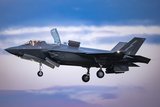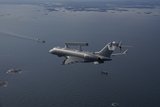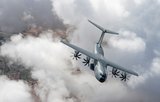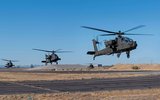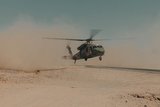Taiwan receives first F-16 Block 70/72 aircraft
66 F-16 Block 70/72 aircraft were ordered by Taiwan in 2019. (Photo: Richard Gonzales/USAF )
Taiwan has received its first F-16 Block 70/72 aircraft, a two-seated F-16D model, from Lockheed Martin, with the US holding a ceremony for the aircraft at Lockheed’s site in Greenville on 28 March.
The US agreed a Foreign Military Sale with Taiwan worth US$8 billion for 66 F-16 Block 70/72 ‘Viper’ aircraft in November 2019. Deliveries of all 66 aircraft are expected to conclude by 2026, the Taiwan Ministry of National Defence said.
In a post on X, US Congressman William Timmons said: “It was an honour to speak today at Lockheed Martin in Greenville for the F-16 Taiwan delivery ceremony.
Already have an account? Log in
Want to keep reading this article?
More from Air Warfare
-
![Lockheed plans further solid rocket motor investment in Europe and Middle East]()
Lockheed plans further solid rocket motor investment in Europe and Middle East
The company has worked to heavily invest in its solid rocket motor production capabilities, both in the US and internationally, to build a strong supply chain to meet growing demand.
-
![Boeing to build Apache AH-64E attack helicopters for Poland, Egypt and Kuwait]()
Boeing to build Apache AH-64E attack helicopters for Poland, Egypt and Kuwait
The $4.7 billion international order for the three countries will see production conclude around May 2032.
-
![How the US Air Force plans to use data analytics to enhance the roles of airmen and assets]()
How the US Air Force plans to use data analytics to enhance the roles of airmen and assets
The USAF has allocated nearly US$500 million to further the deployment of this type of technology in FY2026. It envisions using analytics to enhance sensors, weapons, missiles and human performance.
-
![GKN Aerospace to fly new UAV demonstrator by 2027]()
GKN Aerospace to fly new UAV demonstrator by 2027
The company plans to develop a cost-effective jet-engine drone, going from concept to a flight-tested demonstrator in 18 months.
-
![Sikorsky emphasises localised Black Hawk conversion for uncrewed U-Hawk]()
Sikorsky emphasises localised Black Hawk conversion for uncrewed U-Hawk
The platform was first unveiled in September 2025, with efforts now focusing on flight tests in the next year.








